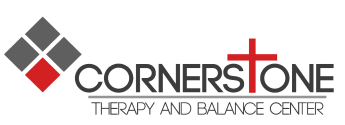
Upper extremity disability can result in disruption of many if not all activities of daily living and instrumental activities of daily living. Occupational therapy professionals receive a strong educational component in psychosocial development and pathology. This provides the basis for understanding the impact of upper extremity dysfunction on key daily activities and roles. Course work in mental health gives occupational therapists the skills to evaluate clients’ psychosocial and emotional needs, modify the treatment approach to facilitate compliance with the rehabilitation program, and promote the best outcome possible. Because of the holistic, client centered approach of occupational therapy, clients are met at their current level of function. Through activity analysis, the occupational therapist is able to address each client’s priorities, along with his or her pathologies, with activity modifications and compensatory techniques to facilitate performing at his or her greatest level of independence from the start, and at every step of the rehabilitation process. This independence encourages integration of the affected upper extremity as soon as possible, thereby making the journey to maximal function seamless.
Occupational Therapy Assessments and Evaluations
Occupational therapy assessments and evaluations reflect a client-centered, comprehensive approach. They include not only musculoskeletal (e.g., muscle strength, range of motion); sensory; cognitive or perceptual (if indicated); and vascular, skin, or connective tissue assessment, but also relevant medical, vocational, and/or avocational history. As part of the evaluation process, occupational therapists identify psychosocial, environmental, and other factors that may influence rehabilitation outcomes. In addition, they evaluate the demands of the client’s workplace and home, including caregiving roles and leisure activities, in order to ensure that interventions are designed to meet tangible, realistic outcomes like returning to work or living safely at home.
The following are examples of conditions and injuries of the upper extremity (i.e., hand, wrist, elbow, shoulder girdle, rotator cuff, multiple joints) that are treated by occupational therapy practitioners.
- Fractures
- Amputations
- Arthritis and rheumatic diseases
- Congenital anomalies
- Crush injuries or trauma
- Cumulative trauma
- Dislocations and subluxations
- Ligament injury and instability
- Muscle strains, tears, and avulsions
- Tendon injuries and conditions (e.g., lacerations, tendonitis, ruptures)
- Nerve injuries and conditions (e.g., neuropathies, palsies, nerve repair)
- Pain (e.g., complex regional pain syndrome, fibromyalgia)
- Replantation and revascularization
- Wounds and scars
- Thermal and electrical injuries
- Neuromuscular pathologies
Occupational therapy interventionsare designed to meet individual client needs and may include the following as part of a comprehensive plan of care:
- Therapeutic activities
- Therapeutic exercise
- Orthosis design, fabrication, fitting, and training
- Joint protection and/or energy modification in home, work, school, or leisure activities
- Sensory re-education
- Mirror therapy
- Scar management
- Pain management
- Work conditioning or work hardening
- Training in activities of daily living and adaptive or assistive devices
- Education for post-surgical or post-injury safety, including sensory loss
From a practical perspective, occupational therapy practitioners working in the area of upper-extremity rehabilitation achieve competency in adjunct areas of intervention, which may include:
- Design and fabrication of selected orthoses for post-surgical, post-injury, or long-term use
- Ergonomic principles
- Diagnostic and post-surgical protocols
- Wound care
- Application of physical agent modalities
- Manual therapy
- Biofeedback techniques
- Taping techniques
- Compression therapy
Conclusion
As a holistic, evidence-based profession, occupational therapy’s approach to rehabilitation goes beyond addressing upper extremity injuries in isolation to include the whole person and his or her functional needs and roles in all the appropriate environments. Occupational therapy practitioners also work closely with surgeons or treating physicians to ensure the most favorable therapeutic outcomes.
Information provided by American Occupational Therapy Association, Inc
